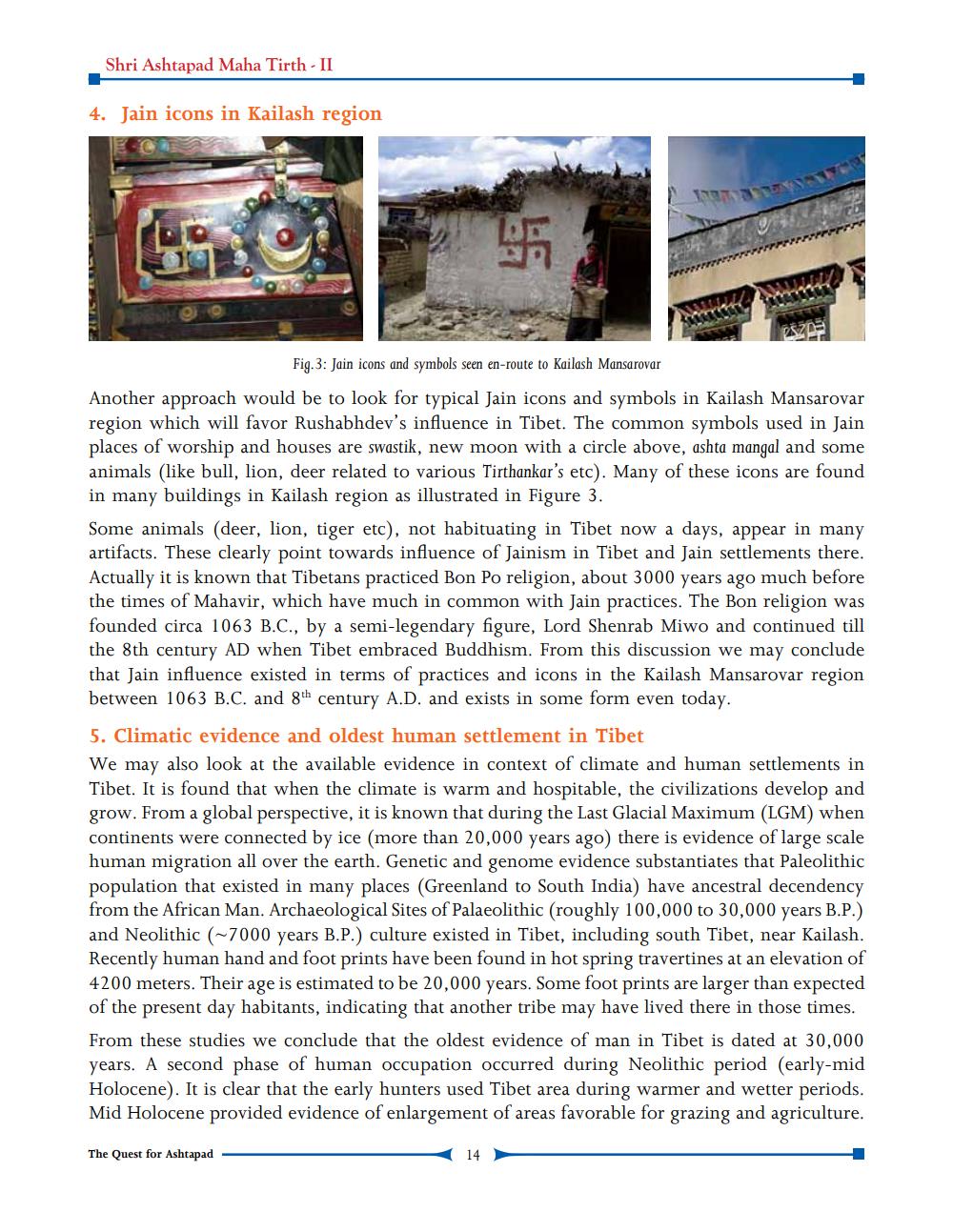________________
Shri Ashtapad Maha Tirth - II
4. Jain icons in Kailash region
Fig.3: Jain icons and symbols seen en-route to Kailash Mansarovar Another approach would be to look for typical Jain icons and symbols in Kailash Mansarovar region which will favor Rushabhdev's influence in Tibet. The common symbols used in Jain places of worship and houses are swastik, new moon with a circle above, ashta mangal and some animals (like bull, lion, deer related to various Tirthankar's etc). Many of these icons are found in many buildings in Kailash region as illustrated in Figure 3. Some animals (deer, lion, tiger etc), not habituating in Tibet now a days, appear in many artifacts. These clearly point towards influence of Jainism in Tibet and Jain settlements there. Actually it is known that Tibetans practiced Bon Po religion, about 3000 years ago much before the times of Mahavir, which have much in common with Jain practices. The Bon religion was founded circa 1063 B.C., by a semi-legendary figure, Lord Shenrab Miwo and continued till the 8th century AD when Tibet embraced Buddhism. From this discussion we may conclude that Jain influence existed in terms of practices and icons in the Kailash Mansarovar region between 1063 B.C. and 8th century A.D. and exists in some form even today.
5. Climatic evidence and oldest human settlement in Tibet We may also look at the available evidence in context of climate and human settlements in Tibet. It is found that when the climate is warm and hospitable, the civilizations develop and grow. From a global perspective, it is known that during the Last Glacial Maximum (LGM) when continents were connected by ice (more than 20,000 years ago) there is evidence of large scale human migration all over the earth. Genetic and genome evidence substantiates that Paleolithic population that existed in many places (Greenland to South India) have ancestral decendency from the African Man. Archaeological Sites of Palaeolithic (roughly 100,000 to 30,000 years B.P.) and Neolithic (-7000 years B.P.) culture existed in Tibet, including south Tibet, near Kailash. Recently human hand and foot prints have been found in hot spring travertines at an elevation of 4200 meters. Their age is estimated to be 20,000 years. Some foot prints are larger than expected of the present day habitants, indicating that another tribe may have lived there in those times. From these studies we conclude that the oldest evidence of man in Tibet is dated at 30,000 years. A second phase of human occupation occurred during Neolithic period (early-mid Holocene). It is clear that the early hunters used Tibet area during warmer and wetter periods. Mid Holocene provided evidence of enlargement of areas favorable for grazing and agriculture.
The Quest for Ashtapad
14




